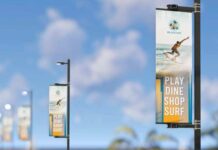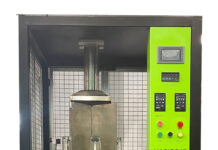By Jeff Wooten
It’s no secret that many sign makers today enjoy working with high-density urethane (HDU) materials when it comes time to bring customers’ dimensional designs to life.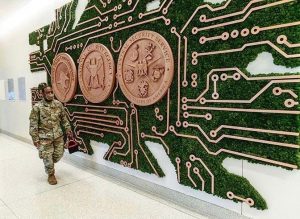
But sometimes, secrecy can be the name of the game—particularly when the client happens to be the National Security Agency (NSA). The NSA is the body of the United States Department of Defense that, together with the CIA and the FBI, conducts national security operations.
This article will open up the dossier and further survey how Veteran Wood Company of Morris County, New Jersey recently used their sign-making expertise to fabricate highly detailed plaques of the NSA’s logos out of DUNA-USA’s fifteen-pound-density CORAFOAM® U150 material. These plaques ended up being part of a decorative wall at NSA’s headquarters in Fort Meade, Maryland that has been designed to represent the organization’s mission in cyberspace.
But first let’s provide you with a little intel about Veteran Wood Company. This sign company is a Disabled Veteran Owned Small Business that was started up by Owner Mike Legregni in 2019. Legregni’s transition into the world of sign making came after several years of service in the U.S. Marine Corps as well as ten years as a New Jersey police officer.
Legregni works on his own in his one-man shop specializing in detailed custom 3D signs and wooden décor for both commercial and residential clients.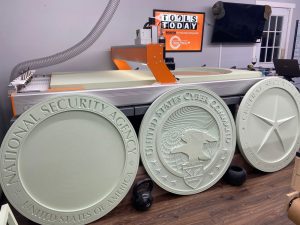
In the beginning of his sign-making adventures at Veteran Wood Company, Legregni used only an X-Carve CNC machine. Eventually Legregni turned to a good friend of his at wood supplier and manufacturer Boards and Beams in Fairfield, New Jersey to help him learn basic and complex tool paths.
Before long, Legregni updated to a STEPCRAFT 48-by-96-inch CNC router and dove in 100 percent to full-time sign making.
This particular NSA project fell into Veteran Wood Company’s grasp when the initial sign maker the organization hired to do the CNC routing work had to back out close to the deadline. Agreeing to take on the job after hearing about this plight, Legregni had about a five-week window to create three large discs that represent the complex insignias of the National Security Agency (an American eagle, a flag shield, and a key), the Central Security Agency (the logos of all five Service Cryptologic Components balanced around a five-point star centered around the NSA symbol) and the U.S. Cyber Command (an American eagle, a shield, stars, and a globe).
The clock was ticking to make this project Mission: Possible!
Legregni designed the signs using Vectric CNC software. “Each logo was sent to me as a three-layer Photoshop file,” says Legregni. “I encountered at least eight to ten hours of CAD time on each logo and getting the tool paths right.”
It took around three hours for Legregni to mill each circular plaque out of CORAFOAM U150 using his STEPCRAFT Q408 CNC machine. He also used his CNC machine to carve the two separate eagles and attached them to the discs using Gorilla Glue® construction adhesive.
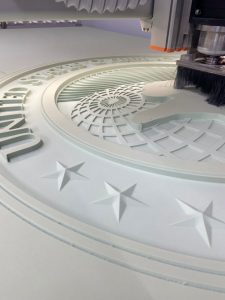 In general, HDU is Legregni’s favorite substrate to paint by far, and rarely does he use anything else unless the customer specifies wanting a natural wood grain or a natural finish.
In general, HDU is Legregni’s favorite substrate to paint by far, and rarely does he use anything else unless the customer specifies wanting a natural wood grain or a natural finish.
Legregni says that NSA officials informed him that the plaques he was providing had to be a certain PANTONE® color.
Initially Legregni had trouble finding a good color match. “I looked at faux metals and all different types of paints,” he says. “I eventually found a Rust-Oleum warm bronze tone that was very close and showed it to them. They agreed it was close to what they wanted.”
Legregni took the pieces outside to spray-paint them underneath his pop-up tent. Each sign was primed using an all-purpose primer.
However the paint was not applied in the typical fashion.
Legregni knew that he didn’t want to go through the paint spraying process and have either the tips clog up or experience bad aerosol odor everywhere. He also wasn’t a fan of how spray paint dispenses or how it looks after application, so he opted for an outside-the-box approach instead.
With this in mind, Legregni ended up puncturing each can and emptying them into his HVLP gun. He then proceeded to spray the pieces like he would a normal paint.
“I figured I could just puncture the can and let everything drain into my gun,” explains Legregni. “I used a 1-mil tip, and it worked out really nicely. Each piece was dry within a couple of hours.”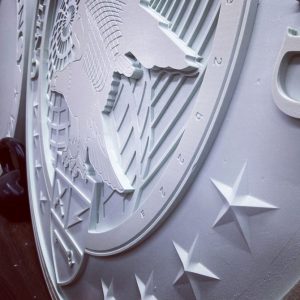
The carved CORAFOAM insignia plaques were just one part of this project.
Once finished, Veteran Wood Company dropped the plaques off at the Hoboken, New Jersey facility of the vendor that was creating a 15-foot-tall-by-30-foot-long wall designed to represent a large electronic circuit (representing the NSA’s mission in cyberspace). The CORAFOAM plaques would be combined with faux-circuitry panels hand-made out of expanded PVC.
Even more exciting is that this finished wall is actually alive! NSA wanted to use it to bridge the gap between design and sustainability, so the other vendor made the background entirely with natural moss.
“The wall is populated between the panels with live air moss imported from Turkey,” says Legregni. “It won’t ever die as long as it’s in an air environment; however it won’t ever grow either.”
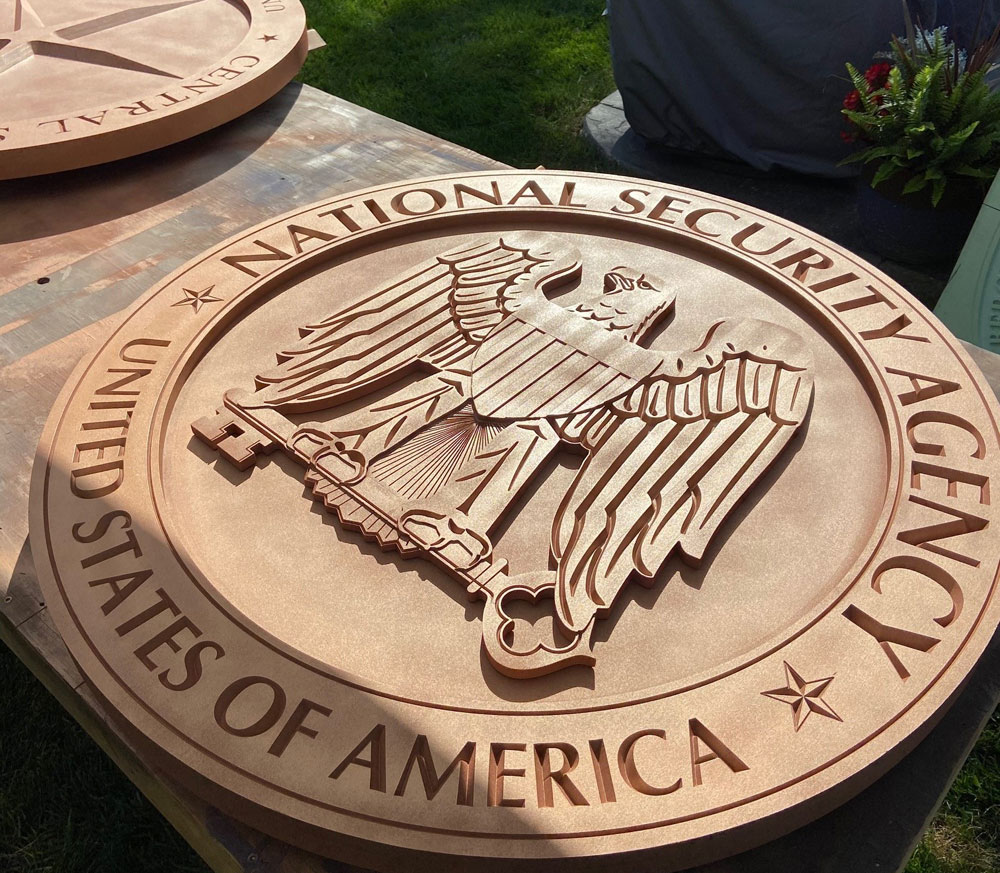
Onsite technicians installed everything at NSA’s headquarters.
“The moss was already in place, and the circuitry panels were glued to them,” says Legregni. “Then the contractors came in and hung the circular logos into place.”



